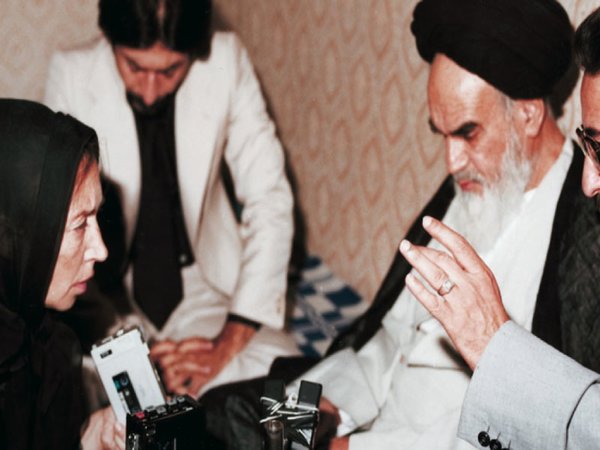In the modern communication age, it’s no longer just journalists who need to be aware of the limitations placed on free speech. Anyone who creates content for public consumption – bloggers, citizen journalists, Tweeters and Facebookers – should have a rudimentary understanding of best ethical practices involved in publishing.
With recent comments by shock-jock Alan Jones about the Prime Minister’s father dying of shame – and the attendant backlash that has taken old and new media by storm – it’s timely to consider the point at which free speech tips the balance of common decency and becomes actionable hate speech.
The main argument in support of free speech is one of democratic legitimacy. A functioning democratic society relies on the right to critique, and contribute to, the public conversation. Without the right to speak freely, citizens are unable to participate in how they are governed.
In Australia there is a commonly held belief that we have a right to freedom of speech but this is a personal rather than legal right. Author and academic, Katharine Gelber, describes free speech in Australia as a “precarious freedom” in that it relies on a common law tradition rather than a broad and entrenched free speech protection.
In the USA, the UK, Canada and New Zealand, specific laws have been enacted that express a right to free speech. In Australia, however, our right to free speech needs to be tested in court. The outcomes in these cases then form the body of law that governs what should and shouldn’t be published.
This often requires a delicate balancing act between the human right to freedom of expression and the legal obligation to not cause harm to others. This balance is struck using anti-vilification and anti-discrimination legislation and, to a lesser extent, the laws of defamation.
So while we are free to do and say as we please, we must do so within the confines of the law.
Numerous laws have been enacted that are designed to protect people and groups from discrimination, including the Australian Human Rights Commission Act 1986, the Age Discrimination Act 2004, the Disability Discrimination Act 1992, the Racial Discrimination Act 1975 and the Sex Discrimination Act 1984.
While these Commonwealth acts cover some of the forms discrimination may take, different anti-vilification laws operate at federal, state and territory levels. Fortunately, where statutory freedom of speech laws have been expressly enacted by States and Territories, they do not override the existing Commonwealth anti-vilification laws.
Given Australia’s settlement history and its policy of multiculturalism, vilification on the basis of race has dominated the actions that have gone before the courts. In general terms, the Racial Discrimination Act 1975, and its extension, the Racial Hatred Act 1995, define vilification as “a racist act, committed in public that could incite serious contempt or severe ridicule of an individual or group because of race, colour, nationality, ethnic, ethno-religious or national background”.
Section 18C of the Racial Discrimination Act itself specifies acts that are reasonably likely to ‘offend, insult, humiliate or intimidate’ are actionable. A racist act can be verbal (broadcast or spoken) or written (printed text or online), and vilification in the online media environment is now covered by the concept of cyber racism. The important factor for consideration is whether the racist act takes place in public.
Racist sentiments that are broadcast on radio or television, or printed in a newspaper or online, are automatically assumed to have taken place in public. Like the laws that govern defamation, anti-vilification legislation is designed to protect an individual from words, images or actions that have the potential to cause harm.
Interestingly, a racist comment made directly to an individual is obviously offensive but it does not constitute hate speech because it does not harm the individual in the eyes of others.
Section 18D of the Racial Discrimination Act 1975 provides some exemptions. It is not unlawful if the racist act was said or done in good faith: as part of an artistic work; was made or held for any genuine academic, artistic or scientific purpose; was a fair and accurate report of any event or matter of public interest; or was a fair comment on any event or matter of public interest if the comment is an expression of a genuine belief held by the person making the comment.
In April 2009 the Herald Sun published an article written by Andrew Bolt called “It’s so hip to be black”. Pat Eatock, and others named in the article, took Bolt and his publisher the Herald and Weekly Times to court over breaches of 18C of the Racial Discrimination Act. Justice Bromberg was “satisfied that fair-skinned Aboriginal people (or some of them) were reasonably likely, in all the circumstances, to have been offended, insulted, humiliated or intimidated by the imputations conveyed by the newspaper articles.”
In making his decision in Eatock v Bolt [2011] FCA 1103, Justice Bromberg found that the claims made in the article – that some fair-skinned Aboriginal people were not genuinely Aboriginal persons but were motivated by career opportunities and had chosen to falsely identify as Aboriginal – were false.
He also found that Bolt and his publishers were not exempted by the defence in Section 18D – that the article was written reasonably and in good faith or published as fair comment – because the article itself contained “errors of fact, distortion of the truth, and inflammatory and provocative language” (Eatock v Bolt [2011] FCA 1103, 17).
While some members of the mainstream media viewed Bromberg’s decision as an attack on free speech, others recognised that it was, in fact, an attack on hate speech.
The Herald Sun is one of the highest circulating daily newspapers in Australia with 2.5 million readers every week. Andrew Bolt, star columnist for the paper, is well known for his conservative views and his provocative style. These factors combine to make it an incredibly powerful medium for shaping public opinion.
In a rush to promote his own conservative, racist agenda, Bolt misused his right to free speech. His language and style was designed to insult and humiliate the 18 Aboriginal people named in the article. The title of the piece is inflammatory and the article itself is uncomfortable reading.
Bolt’s use of terms like “official Aborigine” and “political Aborigine”, and the imputations that racial identification is a choice made for career advancement, are more than just poor taste. They cross the line of what is decent and acceptable in the community.
Katharine Gelber sums it up perfectly: “Hate speech is…more than something that is merely offensive. Hate speech harms its targets in tangible ways. It enacts discrimination through expression. Vilification inflicts injury on the vulnerable and threatens their dignity and equality.”
Unfortunately, the remedies to hate speech at a federal level are limited. Bolt and the Herald and Weekly Times were ordered to publish a notice in their print and online formats. Had the legal action been taken at a state level, Bolt may have face fines or imprisonment.
Journalists, authors, bloggers and users of social media have the right to speak their minds. They have the right to contribute to the public conversation and shape public opinion. However, in doing so, they must be factual, accurate and even-handed in their commentary. Freedom of speech is a powerful right and those who exercise it must do so responsibly.
Ingrid Vaughan is a third year Bachelor of Journalism student at La Trobe University. You can follow her on Twitter: @IngridVaughan.









